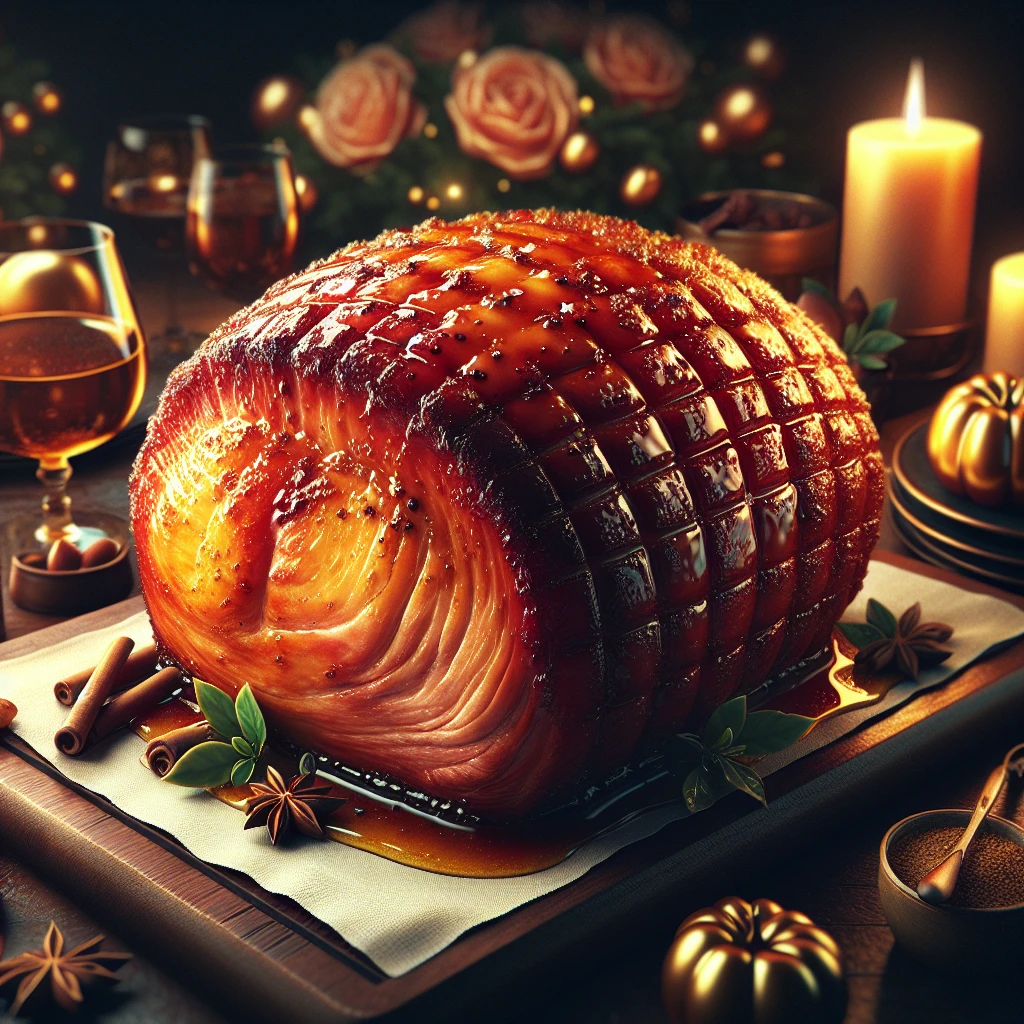
Golden Glazed Ham is the perfect centerpiece for any festive table. With its rich, sweet, and slightly spicy glaze, this ham brings warmth and flavor to any gathering. Plus, it's straightforward to make, ensuring you have more time to enjoy with family and friends.
The star of this dish is, of course, the ham. A fully cooked bone-in ham offers that wonderful, traditional flavor and keeps the meat juicy. Honey adds natural sweetness and helps create that irresistible glaze. Brown sugar deepens the sweetness with its molasses notes. Dijon mustard cuts through the sweetness with a touch of tangy sharpness. Apple cider vinegar adds acidity, balancing flavors and tenderizing the meat. The warm spices — cinnamon, cloves, ginger, and nutmeg — add depth and a touch of holiday nostalgia.
This Golden Glazed Ham pairs beautifully with roasted vegetables, like carrots and Brussels sprouts, and a creamy potato gratin. For a fresh contrast, consider serving it with a crisp, tangy apple slaw or a simple green salad dressed with a light vinaigrette.
Start by preheating your oven to 325°F. While the oven warms up, place your ham on a rack in a roasting pan. To give the glaze a better chance to seep into the meat, score the surface of the ham in a diamond pattern using a sharp knife.
In a medium saucepan over medium heat, combine the honey, brown sugar, Dijon mustard, apple cider vinegar, cinnamon, cloves, ginger, and nutmeg. Stir until everything is well blended and smooth, forming a fragrant and inviting glaze.
Now, brush this glaze generously over the surface of the ham. Make sure you coat it evenly so each bite is packed with flavor. Cover the ham loosely with foil to prevent it from drying out and bake it for about 1 1/2 hours.
After the initial baking time, remove the foil and baste the ham with the pan drippings to keep it moist and flavorful. Continue baking the ham uncovered for another 30 minutes, or until the exterior is golden brown and the internal temperature reaches 140°F.
Once done, let the ham rest for about 10 minutes. This allows the juices to redistribute throughout the meat, making it easier to carve and even more delicious to eat.